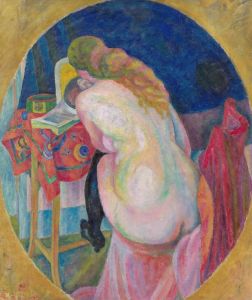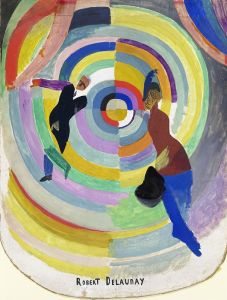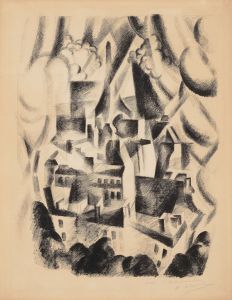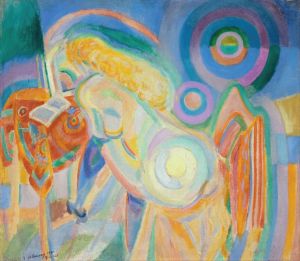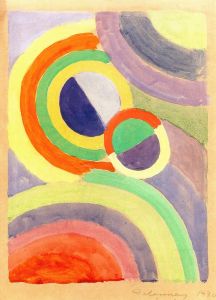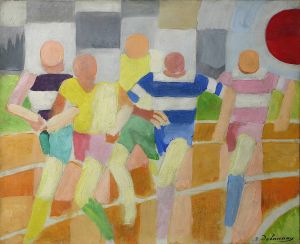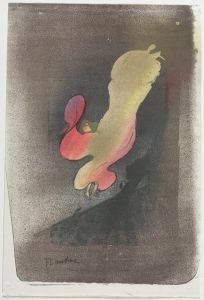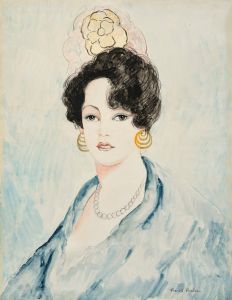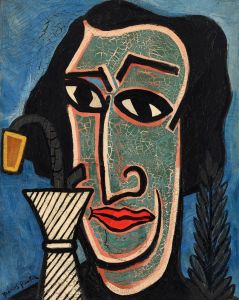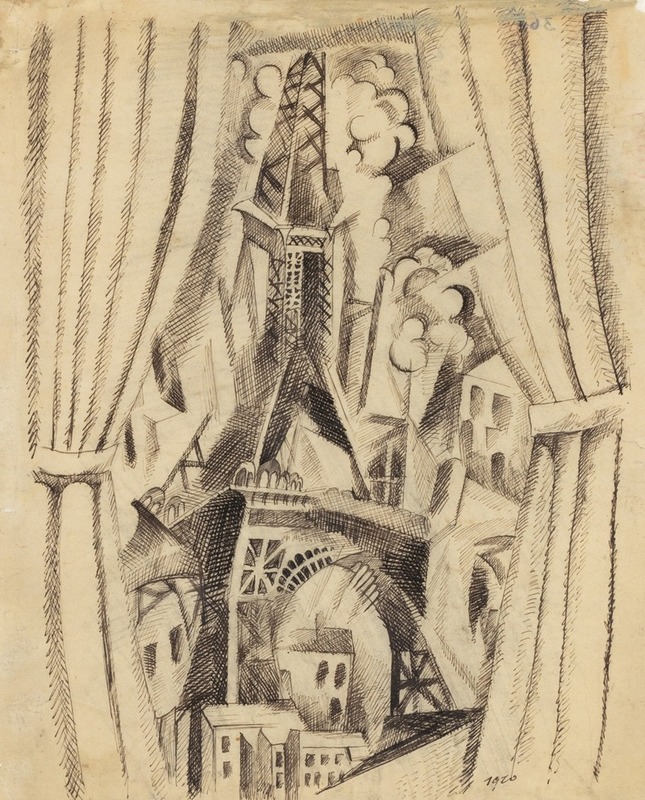
La tour aux rideaux
A hand-painted replica of Robert Delaunay’s masterpiece La tour aux rideaux, meticulously crafted by professional artists to capture the true essence of the original. Each piece is created with museum-quality canvas and rare mineral pigments, carefully painted by experienced artists with delicate brushstrokes and rich, layered colors to perfectly recreate the texture of the original artwork. Unlike machine-printed reproductions, this hand-painted version brings the painting to life, infused with the artist’s emotions and skill in every stroke. Whether for personal collection or home decoration, it instantly elevates the artistic atmosphere of any space.
"La tour aux rideaux" is a painting by the French artist Robert Delaunay, a prominent figure in the early 20th-century art movement known as Orphism. Delaunay is renowned for his innovative use of color and his contributions to abstract art. Born in Paris in 1885, Delaunay was deeply influenced by the vibrant cultural and artistic environment of the city, which played a significant role in shaping his artistic vision.
The painting "La tour aux rideaux" is part of Delaunay's exploration of urban landscapes and modernity, themes that were central to his work. Delaunay's fascination with the cityscape, particularly the Eiffel Tower, is evident in many of his paintings. The Eiffel Tower, a symbol of modern engineering and progress, became a recurring motif in his work, representing the intersection of technology and art.
Delaunay's approach to painting was characterized by his use of bold colors and dynamic compositions. He was influenced by the Neo-Impressionists and their technique of using small dots of color to create a vibrant surface. However, Delaunay took this a step further by focusing on the interplay of colors and their ability to convey movement and rhythm. This approach is evident in "La tour aux rideaux," where the use of color and form creates a sense of dynamism and energy.
Orphism, the movement with which Delaunay is most closely associated, emphasized the lyrical and expressive qualities of color. It was a form of abstract art that sought to convey emotion and sensation through the use of color and light. Delaunay, along with his wife Sonia Delaunay, was a leading figure in this movement, and their work had a significant impact on the development of abstract art in the 20th century.
In "La tour aux rideaux," Delaunay's use of color is particularly striking. He employs a palette of vibrant hues to create a sense of depth and movement. The painting captures the essence of the modern city, with its dynamic energy and constant motion. Delaunay's technique involves the juxtaposition of contrasting colors, which creates a sense of vibration and luminosity. This approach reflects his interest in the scientific theories of color and perception, which were influential in his work.
Delaunay's paintings often blur the line between representation and abstraction. While "La tour aux rideaux" may depict a recognizable urban scene, the emphasis is on the abstract qualities of color and form. This focus on abstraction was a significant departure from traditional representational art and marked a shift towards a new way of seeing and interpreting the world.
Throughout his career, Delaunay continued to explore the possibilities of color and form, pushing the boundaries of traditional painting. His work has been celebrated for its innovative approach and its contribution to the development of modern art. "La tour aux rideaux" exemplifies Delaunay's unique vision and his ability to capture the spirit of modernity through the language of color and abstraction.
Robert Delaunay's legacy as a pioneer of abstract art and his influence on subsequent generations of artists remain significant. His exploration of color and form continues to inspire artists and art enthusiasts alike, making works like "La tour aux rideaux" enduring symbols of the transformative power of modern art.





